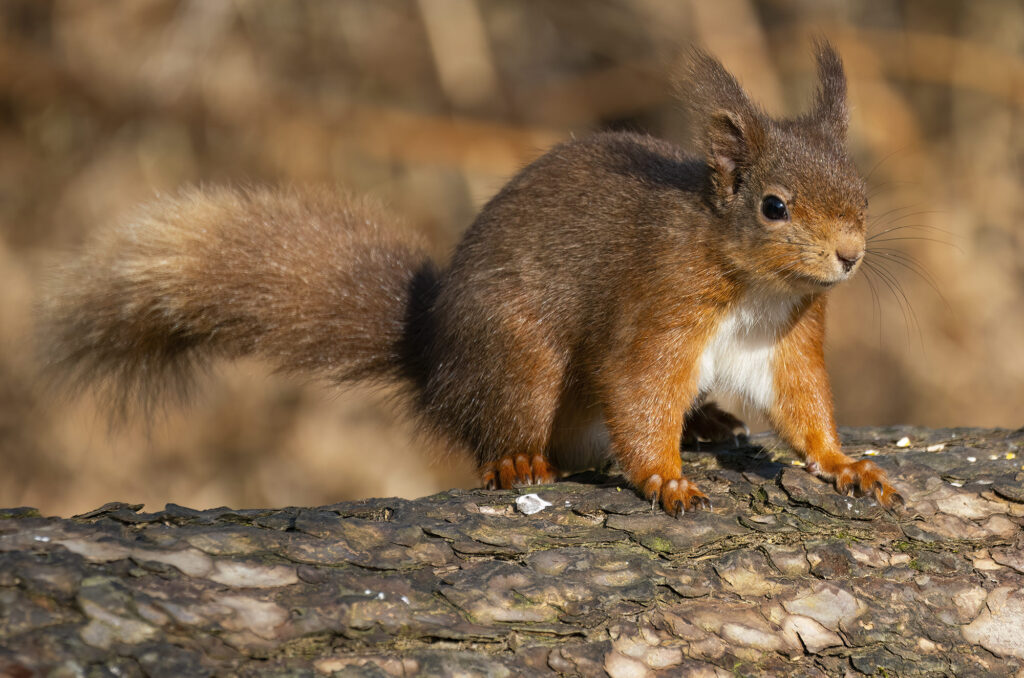Nature reserves are perfect places to explore when you want to photograph wildlife while visiting somewhere unfamiliar. Not only are they refuges for nature, but they are also often well-documented with maps, guides to flora and fauna, and lists of recent sightings – making it easier to find out what species you might see and how best to spot them. Some even have hides where you can watch and photograph wildlife in relative comfort.
On a trip to the east coast near Dundee earlier this month, my partner and I took full advantage of the wide variety of nearby nature reserves – with varying degrees of success.
Montrose Basin
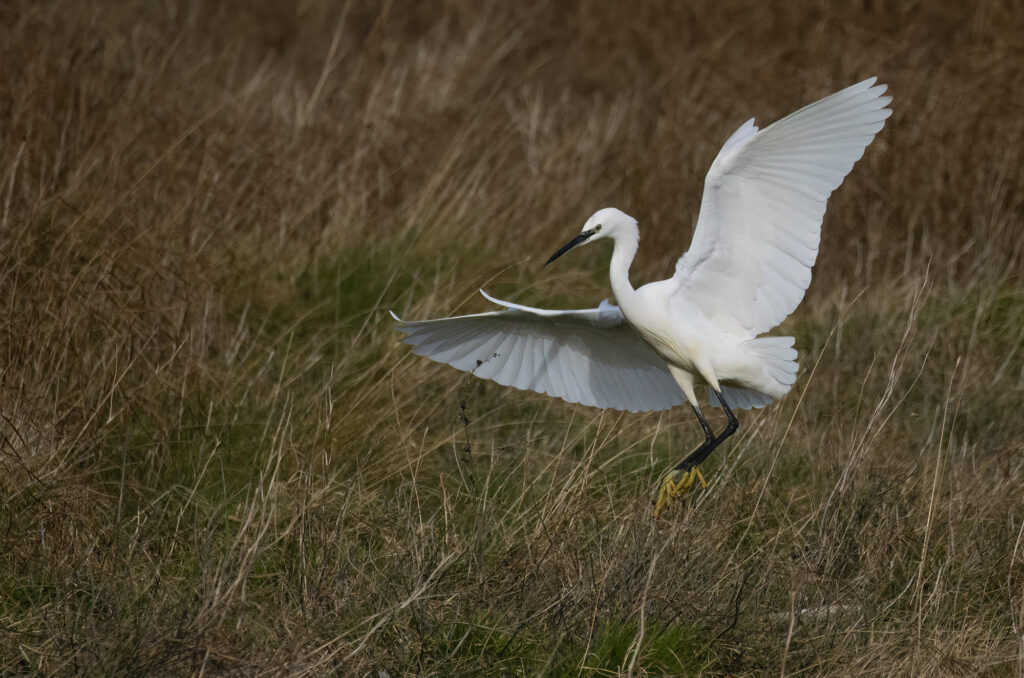
The first reserve we decided to visit was Montrose Basin, and we headed straight for the Scottish Wildlife Trust’s visitor centre. I’d love to tell you what it was like, but we never made it inside. Instead, we were drawn to the Bank of Scotland hide, just down a few steps from the car park.
As we settled into the chilly shade, a kingfisher teased us, hunting and feeding on a distant post rather than on any of the numerous perches nearer the hide. A sparrowhawk flew past at speed, gone before we could even process its presence. Buzzards wheeled high above the hide, and seals basked on the distant sands.
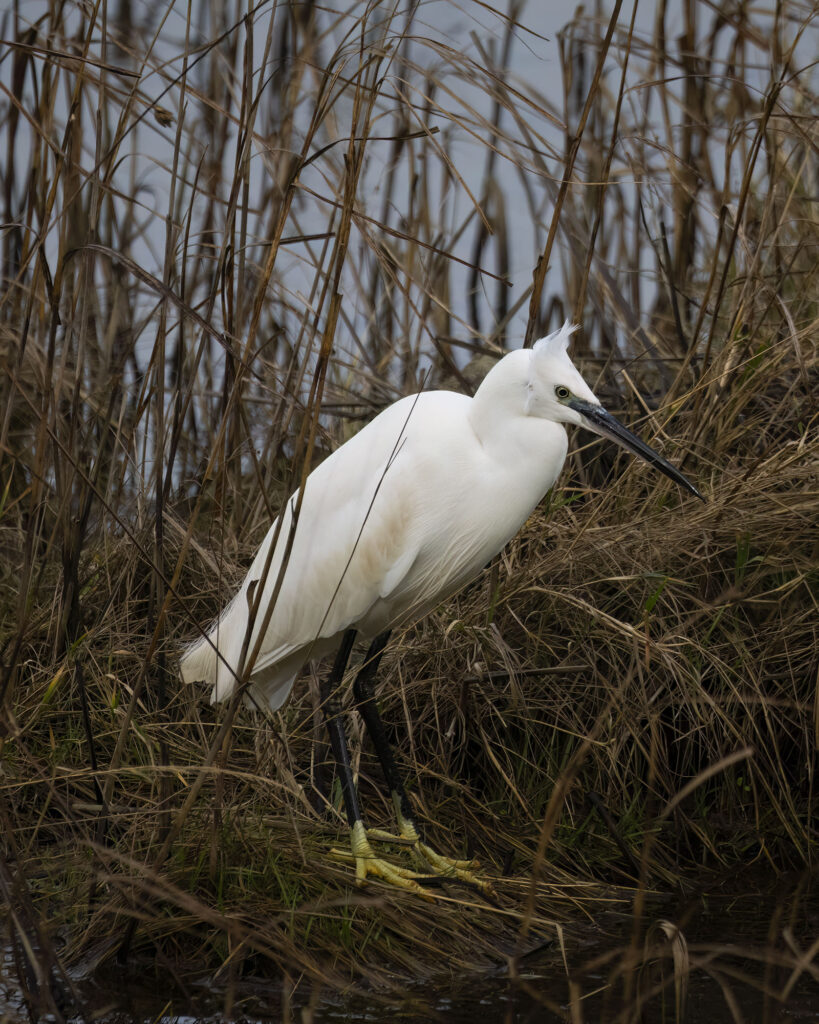
While most wildlife remained out of reach of my lens, one bird kept us entertained as the stiff breeze kept the clouds moving and the light shifting. A little egret hunted among the reeds, its pristine white feathers blowing comically in the wind. Once a rarity, this elegant white heron is now a familiar sight along Scotland’s coastal lagoons and estuaries, particularly in the south. A pair of mallards followed the egret’s every move, seemingly intent on scuppering its attempts to land its catch. Eventually, it flew off to a quieter spot, and as the rumbling of our stomachs echoed through the otherwise quiet hide, we started thinking about our own lunch plans.
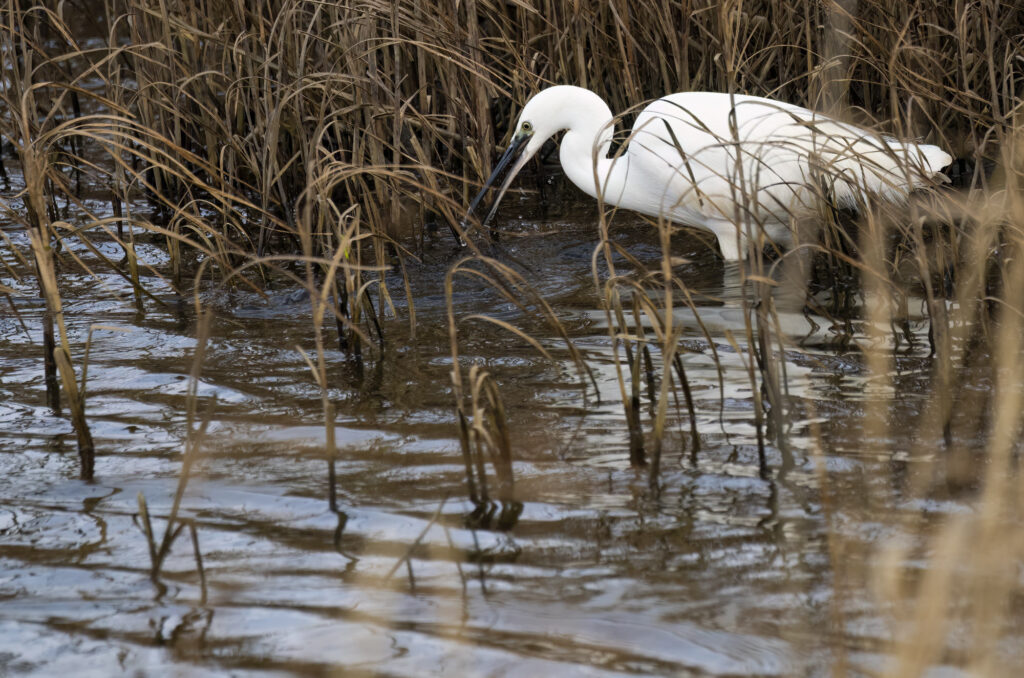
After a quick pit stop to pick up sandwiches, we headed around the basin to the Tayock part of the reserve. While providing good views over the basin, the Tayock Blind only yielded a few oystercatcher sightings. However, the walk to the open hide and back was peppered with brown rabbits bouncing through the undergrowth near the path.
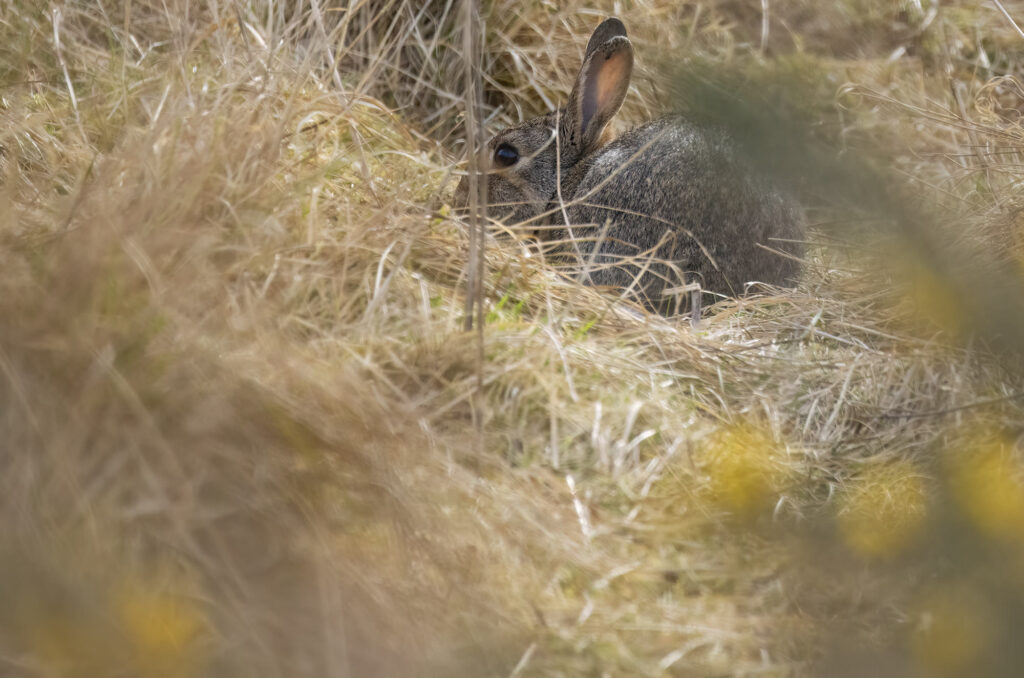
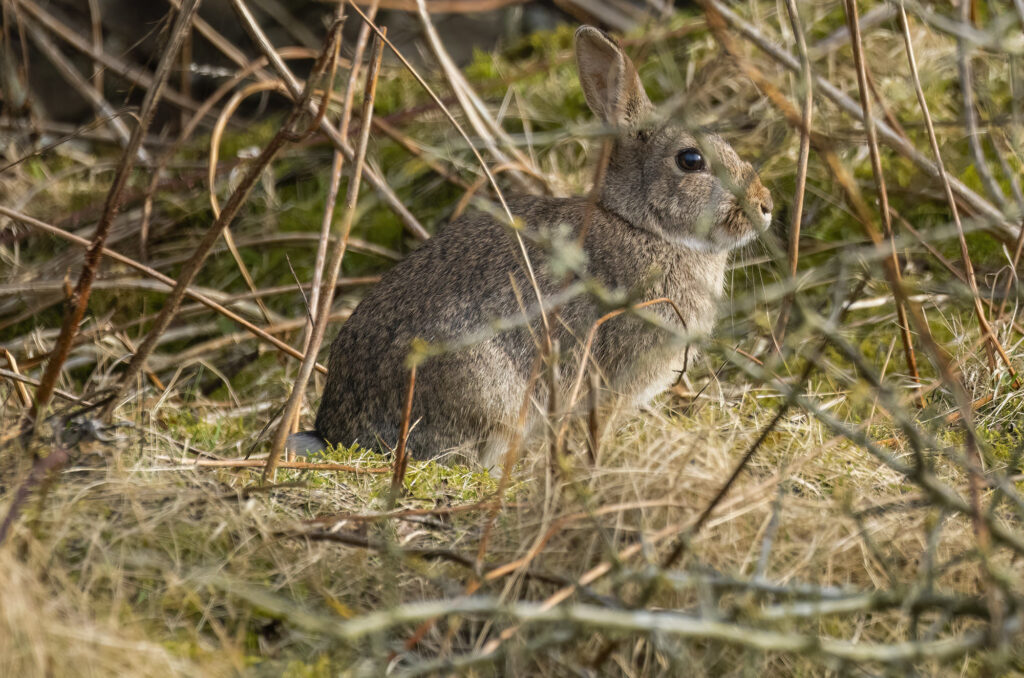
Our final walk of the day was a one-mile trek along a farm track to the Shelduck hide. We didn’t see any shelducks, but we did spot plenty of teal bobbing on the water as the wind whipped across. Mute swans kept their distance, resting in the nearby fields – though one cooperated with a lacklustre fly-past, allowing me to capture a couple of decent images before we headed back to the car park.
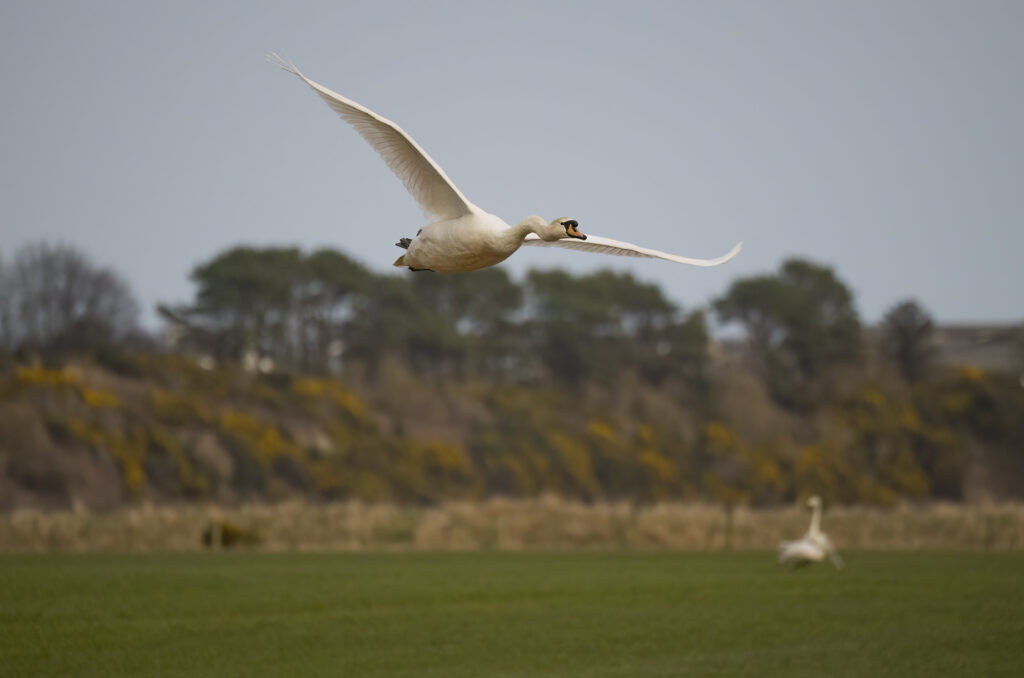
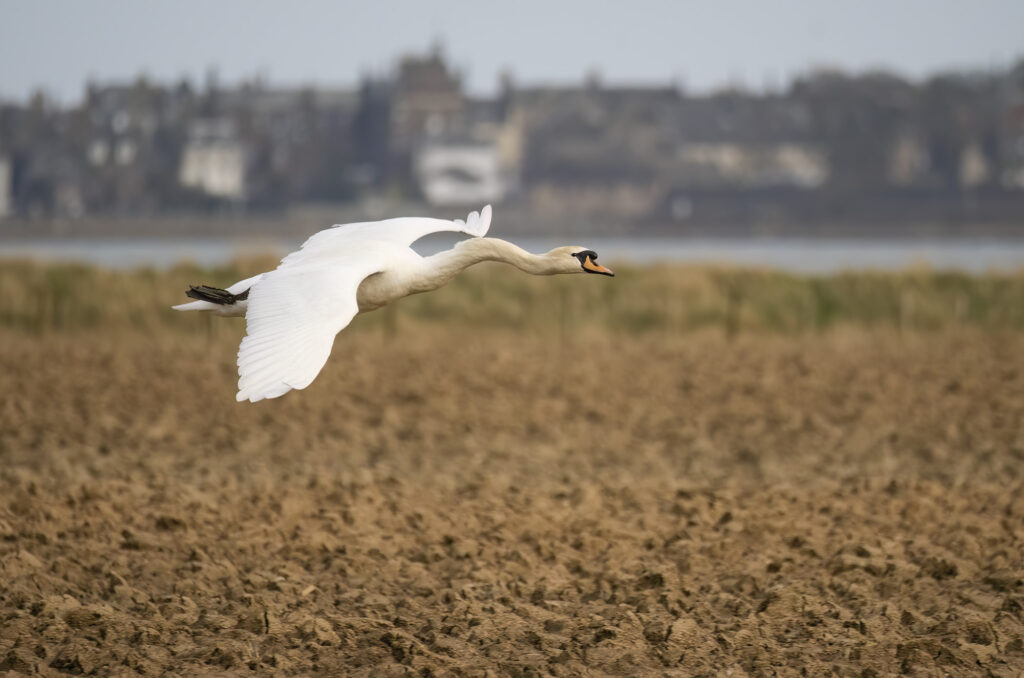
Loch of Kinnordy
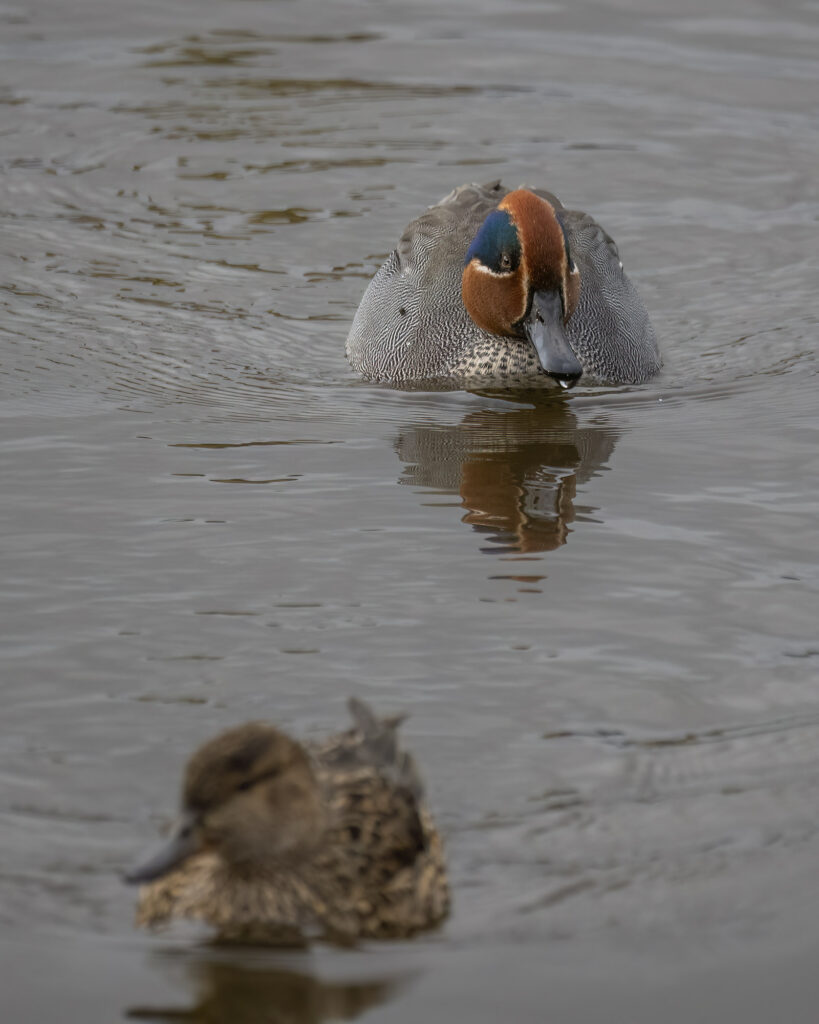
While our day at Montrose Basin was punctuated with sunny spells, our trip to the RSPB’s Loch of Kinnordy reserve was a greyer affair. Strengthening winds seemed to bring even more cloud cover. With the forecast predicting improved weather as the day wore on, we waited out the worst of it at the lovely Bridges Coffee House in nearby Kirriemuir. I highly recommend the sweet chilli chicken panini and the lentil soup – perfect for warming up before heading out to the hides on this small reserve.
With a supposed break in the clouds imminent, we arrived at the reserve hopeful for red squirrel sightings. Unfortunately, the strong winds dampened our chances. The clearing with the bird and squirrel feeders was largely empty, save for a few determined coal tits and the briefest glimpse of a great spotted woodpecker.
The reserve bore the scars of Storm Éowyn, with fallen trees and broken branches, but there were also signs of a different kind of tree felling – by industrious beavers that inhabit the reserve. Seeing their handiwork in the form of gnawed tree trunks near the hides and paths was a thrill. Though we never expected to see beavers in broad daylight, their presence was unmistakable.
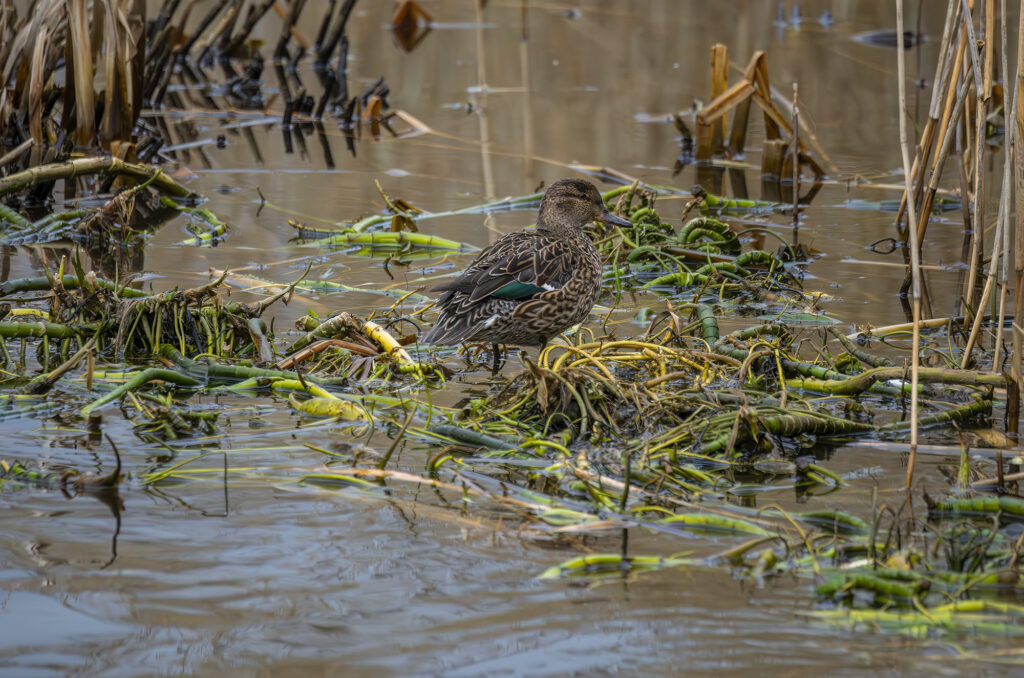
We had the reserve mostly to ourselves, apart from a hardy cyclist in high-vis gear who briefly popped into the same hide as us before continuing his ride. While the three hides offer fantastic views of the loch, there wasn’t much wildlife to see – just a small flock of wigeon, some oystercatchers, and a distant wheeling buzzard. The lack of light made it difficult to spot anything further out, let alone photograph it. However, one species stayed close to the Gullery Hide for long enough to allow me to capture some decent images – a pair of teals dabbling among the reeds.

These small, fast-flying ducks are common winter visitors to Scotland, arriving from northern Europe to spend the colder months on wetlands, lochs, and estuaries. The drakes’ striking green and chestnut head markings make them particularly eye-catching, and their whistling calls add to the atmosphere of Scotland’s wild marshes. After capturing a few images of this obliging pair, we decided to call it a day and head back to our hotel.
Morton Lochs
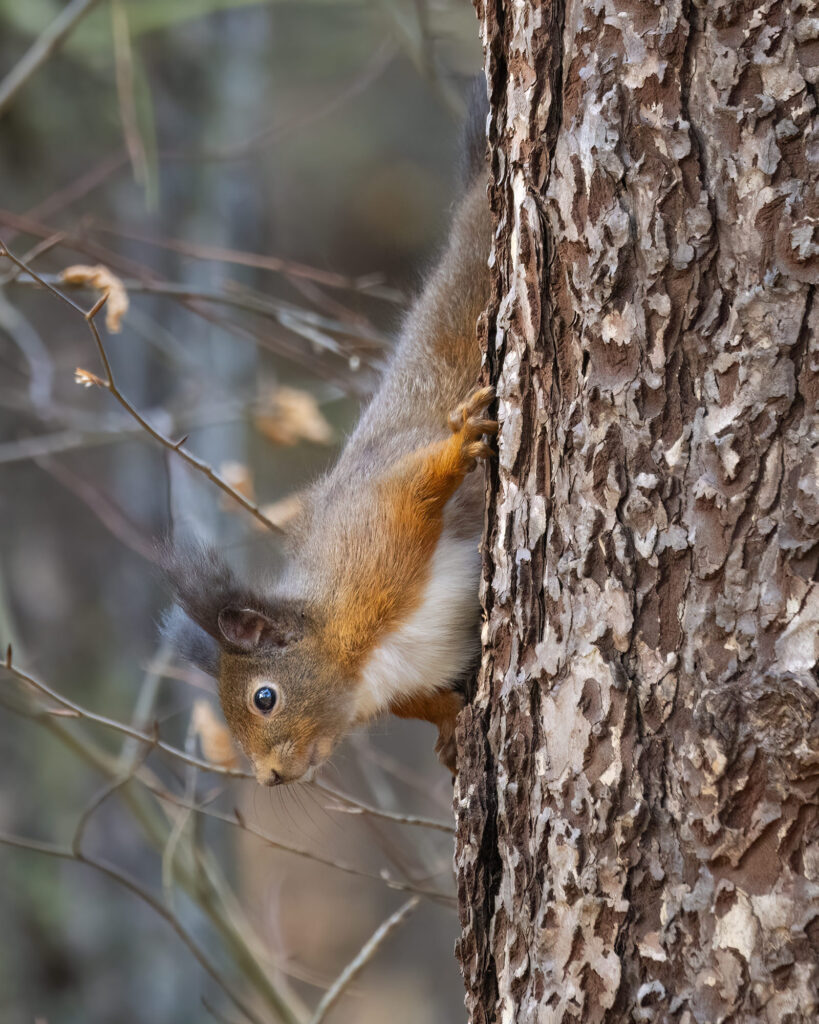
Morton Lochs is part of Tentsmuir National Nature Reserve. While it has its own car park, we chose to stop at The Larick Centre in nearby Tayport, which offers ample parking and a lovely community-run café. From there, we followed a path through Scotscraig Golf Course into the northern end of the reserve. It was a peaceful and pleasant walk, made even more enjoyable by the first warm and sunny day of our trip.
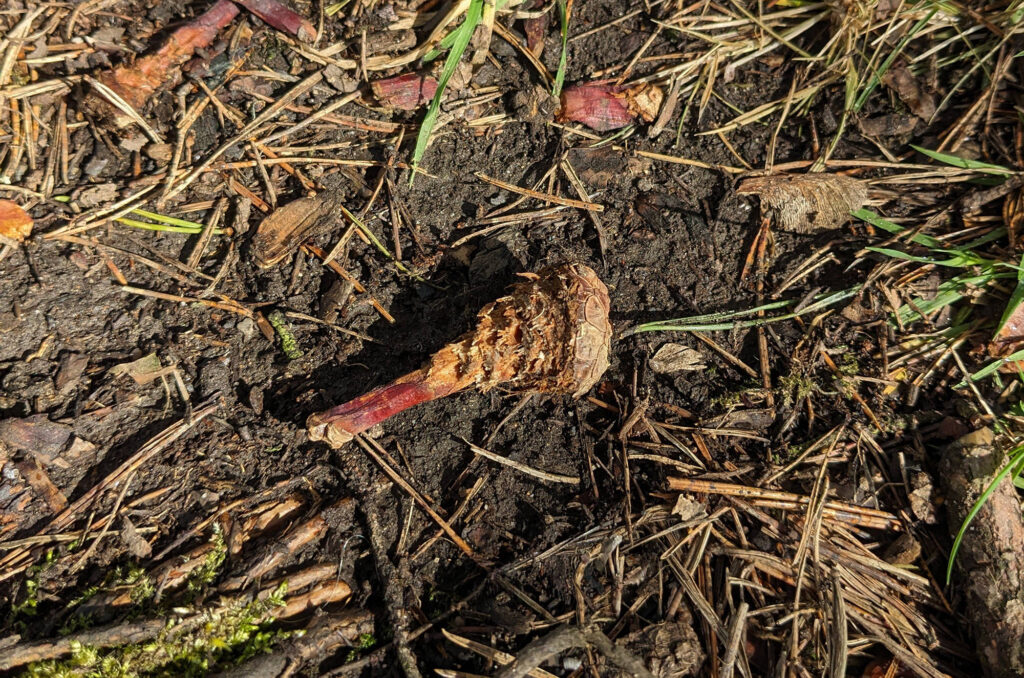
As we entered the shaded woodland, I was keenly aware that we had stepped into red squirrel territory. Signs of their presence were everywhere – stripped pine cones littered the ground. Both red and grey squirrels feed on these cones while perched in trees, holding them in their dexterous paws and stripping them from the base upwards to access the seeds inside. If you ever find nibbled cones on the ground, it’s worth looking up – you may just spot a squirrel staring back down at you.
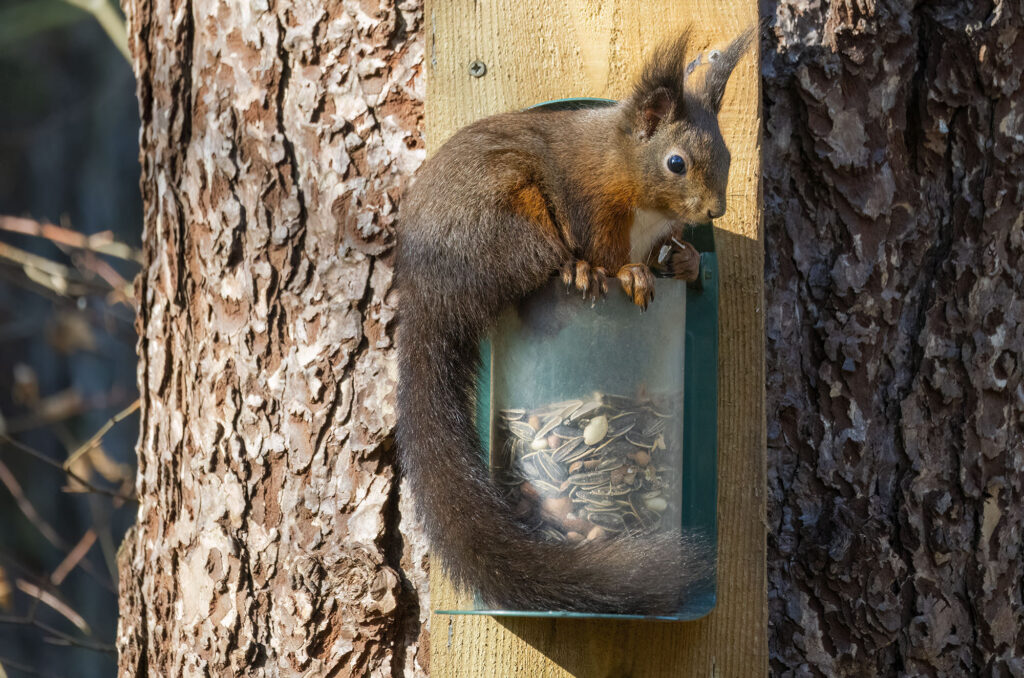
With squirrel activity evident all around, it wasn’t surprising that we found a chap near the first hide, lens trained on a red squirrel at a feeder. This confiding little individual seemed quite comfortable with our presence as we chatted with the friendly photographer, capturing a few images – or more accurately in my case, hundreds of images. The squirrel was quite the performer, posing on a tree trunk between mouthfuls and keeping a wary eye on a nearby rival scurrying up and down a tree.
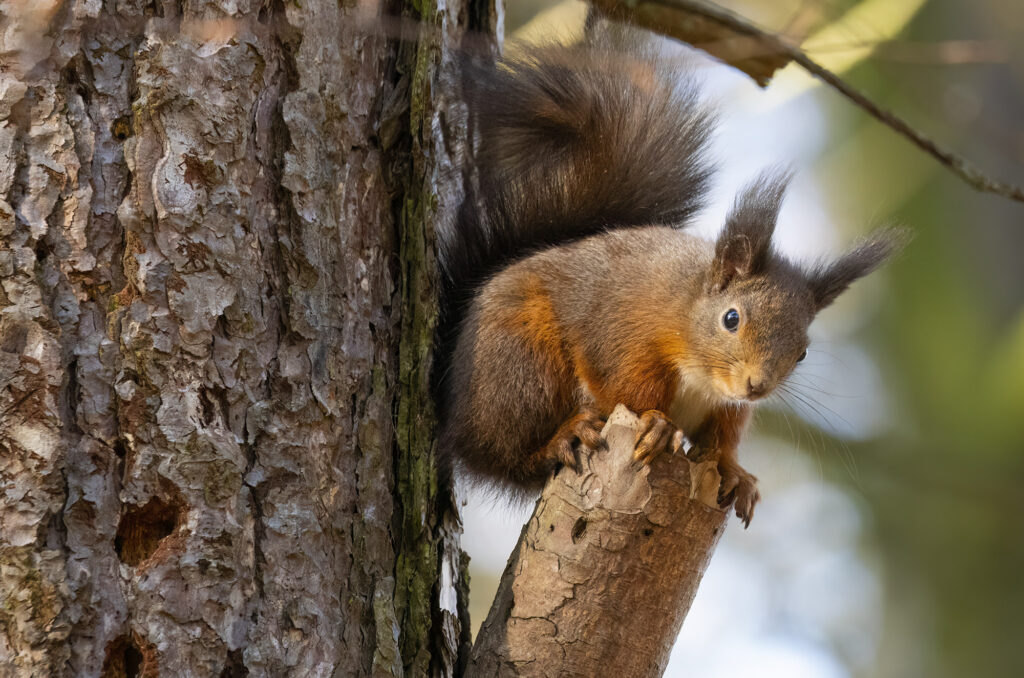
After indulging in far too many squirrel photos, we moved on to a lochside hide to watch the birdlife in the sun. Apart from a few distant Canada geese and mallards, it was mostly quiet. Our pulses quickened at a flash of electric blue – first one way, then another – as a kingfisher zipped up and down the loch, though it frustratingly never settled on the perfect perches in front of us.
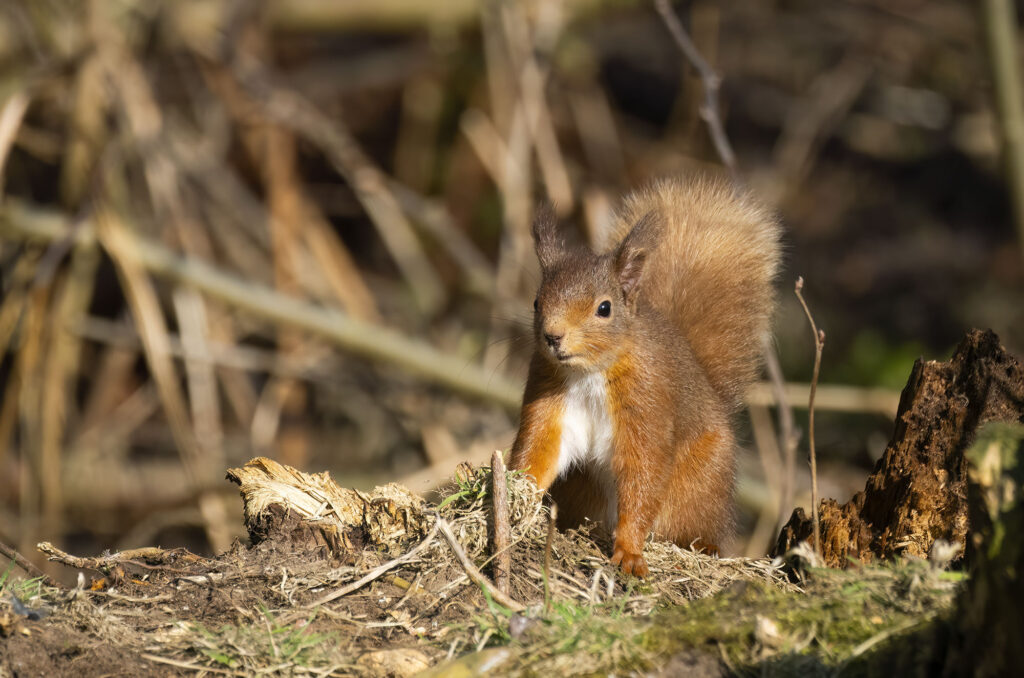
A more rewarding stop was the aptly named Squirrel Hide. Here, nuts had been scattered among logs and deadwood, attracting another red squirrel just as we arrived. Once inside, it was hard to leave – each time we thought the action had stopped, the squirrel would reappear. The feeders also attracted plenty of small birds, including blackbirds, chaffinches, great tits, and blue tits, providing ample opportunities for close-up photography.
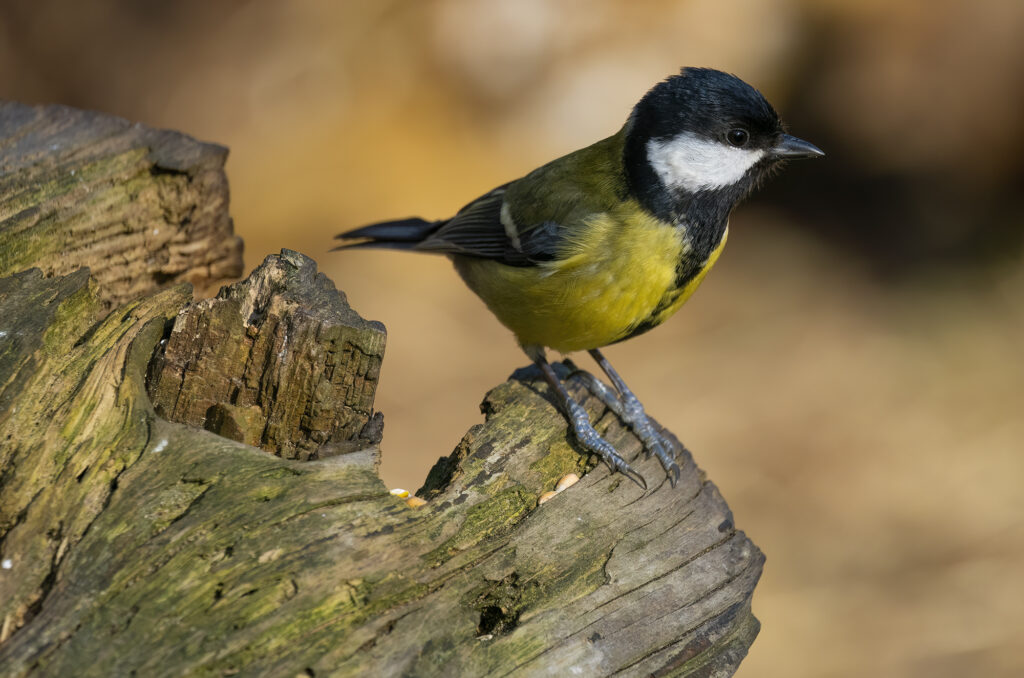
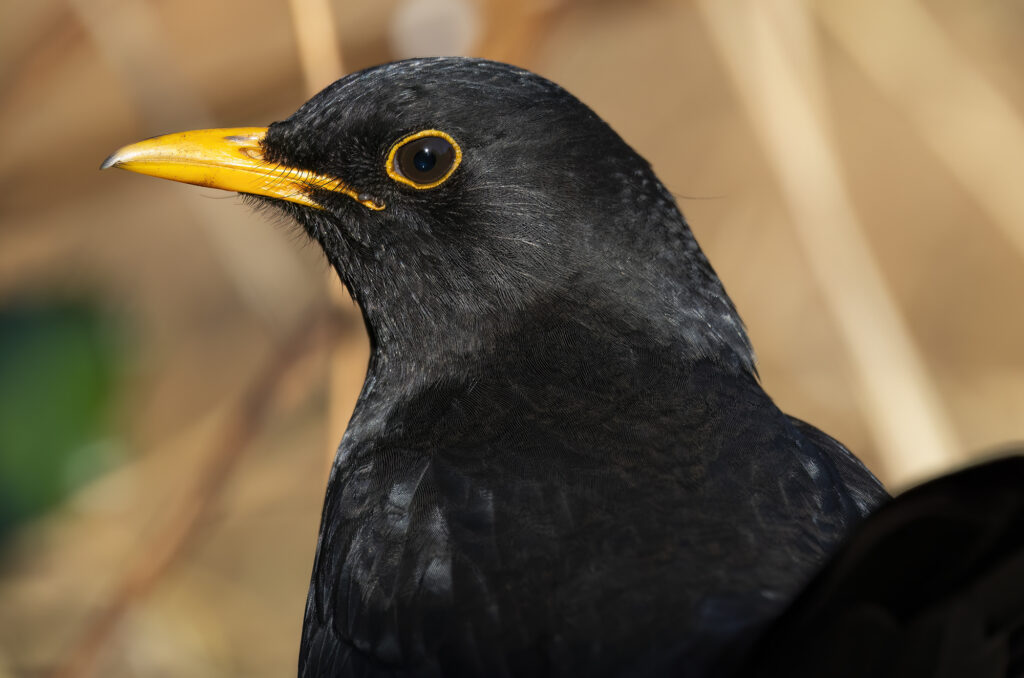
I was delighted to finally capture red squirrels with full, fluffy ear tufts – something I had previously missed due to photographing them in warmer months or rainy weather. Spring is an ideal time to see these tufts before they are shed along with the squirrels’ thicker winter coats.
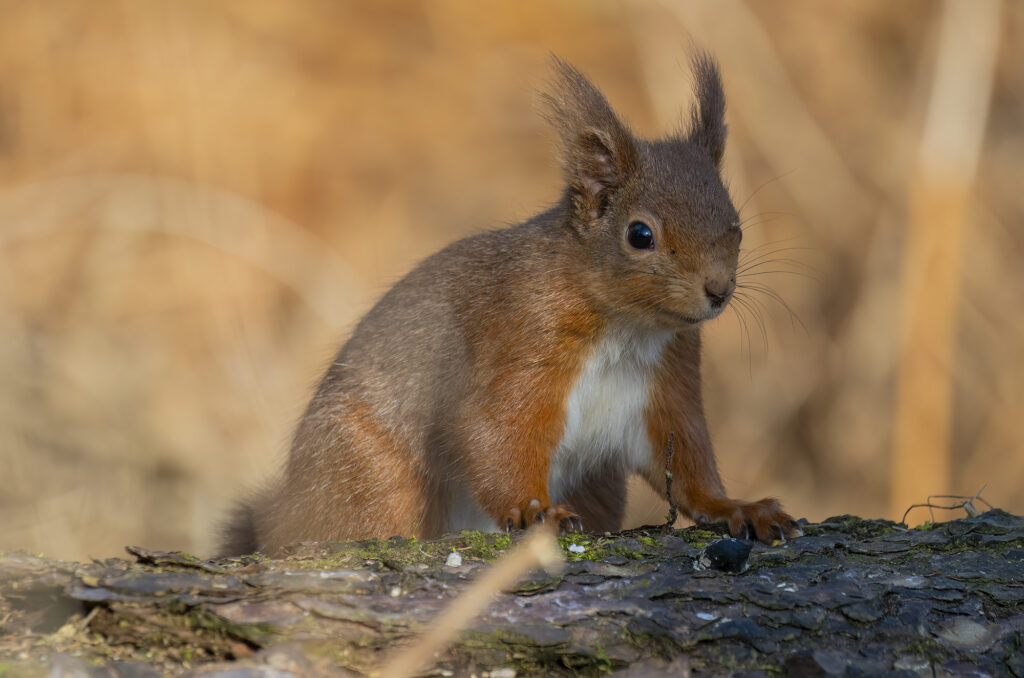
The only slight frustration from a photography point of view was the long grass stems and twigs that the squirrel seemed determined to sit behind or in front of. However, I haven’t removed these annoying distractions from the images during post processing, as I’m a firm believer in showing nature as I saw it.
Once again, it was our grumbling stomachs – and the promise of refreshment at The Larick Centre café – that eventually tore us away. But not before I had taken hundreds more images of our charismatic red squirrel subjects.
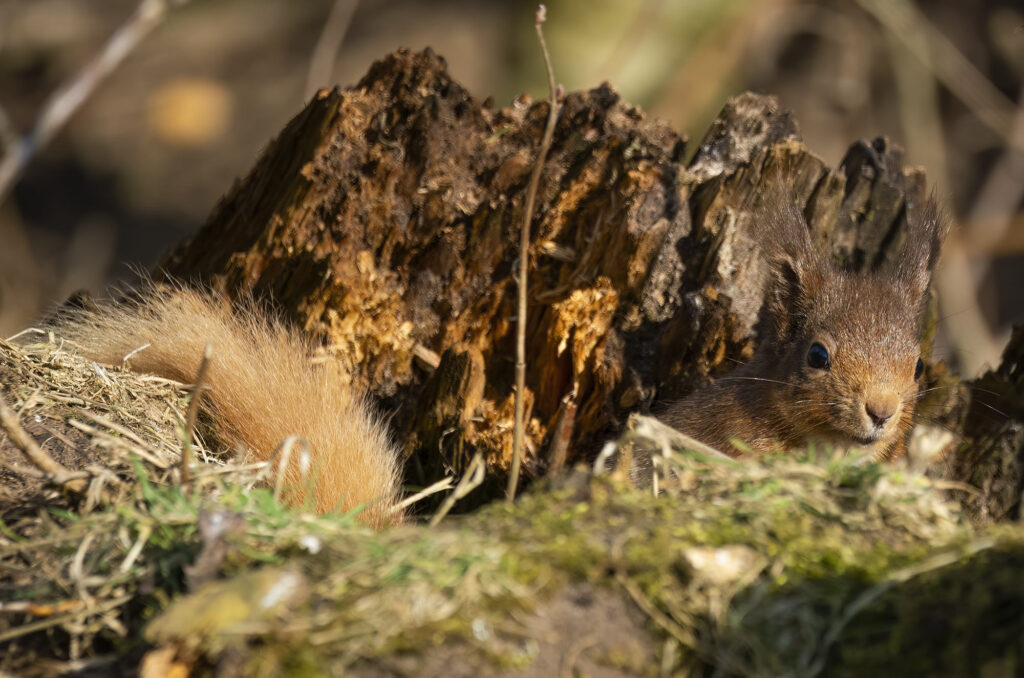
Eastern charm
Exploring Scotland’s east coast nature reserves was an unforgettable experience, offering a wonderful mix of landscapes and wildlife encounters. From an elegant little egret battling the wind at Montrose Basin to red squirrels posing perfectly at Morton Lochs, each reserve had its own charm. If you ever find yourself in this part of Scotland with a camera in hand, I highly recommend taking the time to explore these fantastic reserves – you never know what wildlife moments you might capture.
